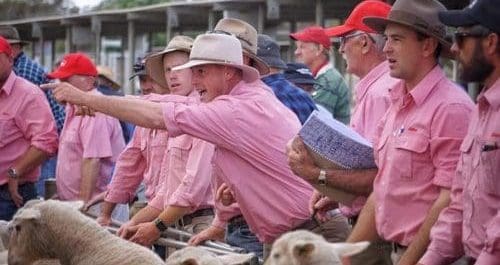
INCREASED access into China for more Australian processors, strong global beef prices and declining sheep/lamb supplies are helping to drive mutton prices to their highest level in three years.
On 28 April, it was announced that several Australian sheep meat processors had gained new or improved access into China. On 2 May, Meat & Livestock Australia market information analyst Emily Tan said mutton prices lifted 63 cents the previous week and last week at the Wagga Wagga saleyards a long bidding war for heavy sheep resulted in a price range of 577–622c/kg cwt.
In Bendigo on 28 April, heavy sheep prices lifted from 680c/kg to 720c/kg cwt due to increased competition from a northern exporter, leading to certain buyers being unable to fill orders. This resulted in the national mutton prices lifting by 63c to 625c/kg cwt, marking the largest lift in mutton prices on record in the past two weeks. Ms Tan said mutton prices were then the highest they had been since June 2022.
MLA’s National Livestock Reporting Service said mutton prices were cheaper at Bendigo today, mainly around quality. But heavy mutton tracked either side of 600c/kg cwt. Most trade and light sheep ranged from 420c to 570c/kg cwt at $90 to $140/head; very light ewes $50 to $80/head. Mutton grids with Merino sheep priced at $5-$6 have been released by processors.
Ms Tan said processors are also currently under pressure to fill kill space as lamb prices continue to rise and average 850c/kg cwt, so certain buyers are being priced out of the market and this competition to fill processor space has driven the mutton price upwards.
The impact of beef price and supply dynamics
Global AgriTrends analyst Simon Quilty said mutton demand and price is being impacted by the very strong global beef prices and likely changes in Chinese beef import conditions.
He believed the approval of new access into China for 10 Australian sheep meat processors and another seven gaining expanded access, enabling chilled as well as frozen product supply, were largely due to the country’s appreciation of mutton as a value-based protein.
 “And with such high global beef prices, the surge for mutton is on.
“And with such high global beef prices, the surge for mutton is on.
“With China being a significant part of our mutton market, it is important,” he said.
“It really just underpins what we believe are going to be stronger prices due to at some point supply really starting to tighten here.”
Mr Quilty said Chinese beef farmers have wanted more protection from beef imports and there is currently a review on market safeguards with findings likely due in August, with the possibility that safeguards might be imposed on other countries also, tightening up the movement of beef into China.
On December 27, the People’s Republic of China Ministry of Commerce Trade Remedy Investigation Bureau announced a safeguard investigation on global beef imports following a petition by the China Animal Agriculture Association and nine provincial animal agriculture associations. The investigation covers fresh, chilled, and frozen beef products classified under specific HTS codes, valued at $14.2 billion in 2023.
Mr Quilty said Australia is the only country in the world that has safeguards imposed on it by China, and the threshold for beef from Australia this year is 208,000 tonnes.
“So we are going to hit that in late July-August and once we get to that threshold it means that our duties into China go to from zero to 12 percent,” he said.
“Declining beef supplies into China is likely going to be the outcome when this review is finalised, so China is probably going to be looking for alternative proteins.
”I think mutton and lamb play an important role because in the background we have this beef safeguard review.”
Added processor access into China is impacting saleyard prices
Elders Bendigo livestock manager Nigel Starick said the improved access for more processors into China is having an influence on saleyard prices.
“Our mutton goes to so many different countries whereas our lamb is pigeon-holed into a few.
“So we’ve got a great spread (of demand) and less risk when things change on the global market for mutton than we do with lamb.”
Mr Starick said the current mutton supply is dragging more numbers in saleyards.
“As the price stays high and drags more out there will be less to buy.
“But if it stays dry there is going to be more sold.”
He said some sheep producers battling the extended dry season and lack of stock water were selling ewe weaners and older ewes, perhaps 4-5 year-olds, to make space, cut feeding costs and better manage a smaller flock. Many producers were also either lambing or about to lamb down ewes.
“I spoke to a good friend in the Wimmera-Mallee, he’s got 63 dams on his place, but he has only three with water in them.”

HAVE YOUR SAY